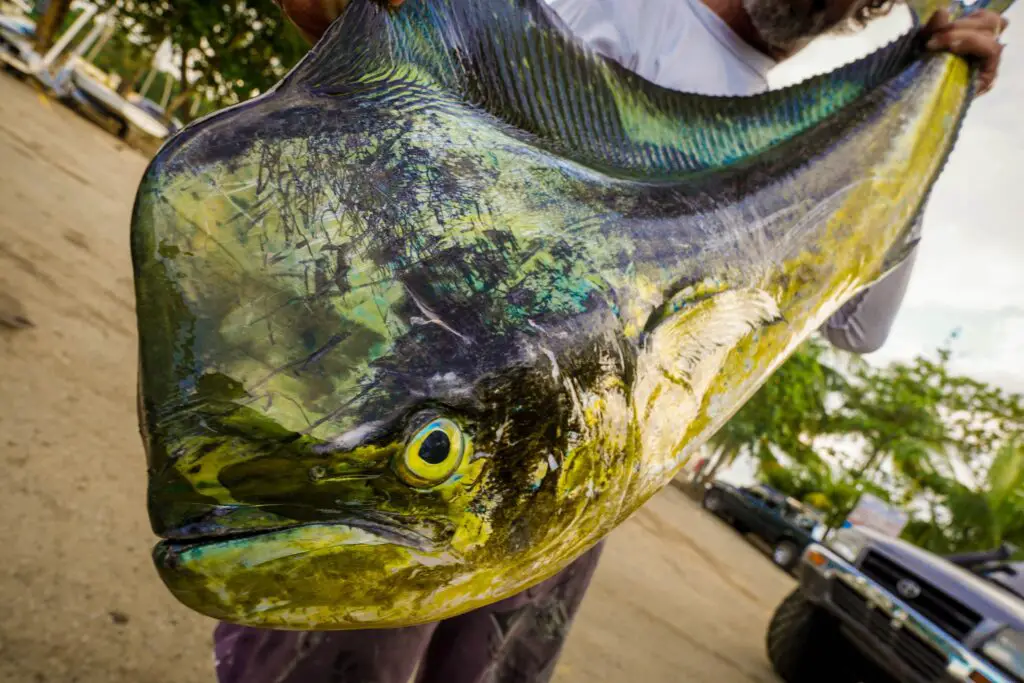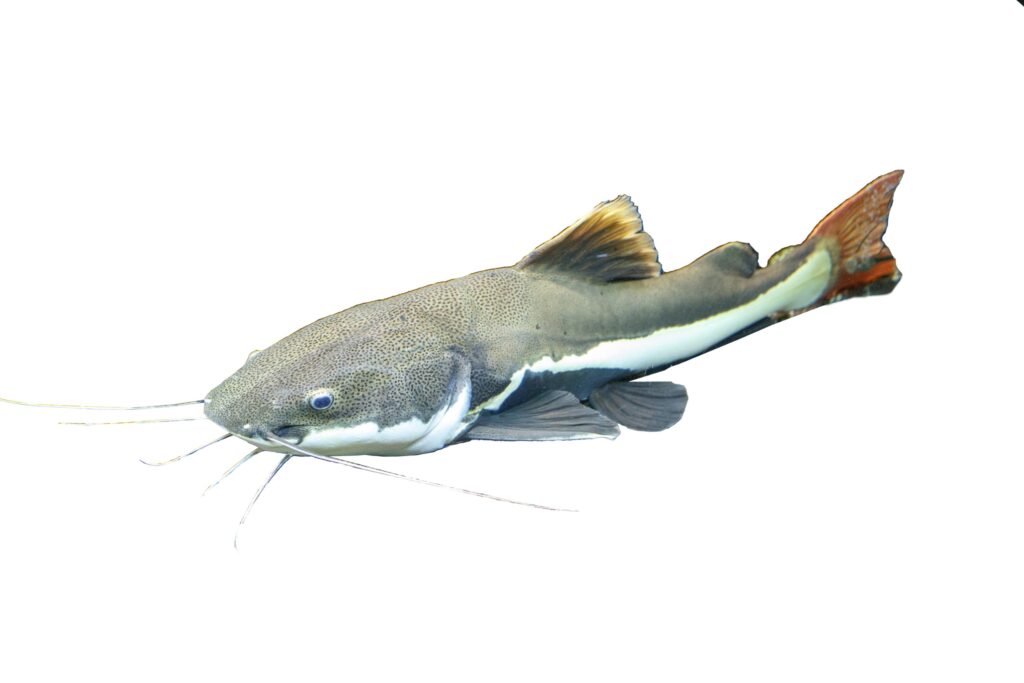Catfish is a popular fish due to its cat-like whiskers as well as smooth skin, unlike most fish. Just like that, Mahi Mahi is another unique and interesting fish. Both of these fish have a lot of differences among them. The biggest difference is in their appearance. Both the fish look completely different, so there is no way to confuse them in the water. Even without that, they differ in their habitat, nutritional composition, as well as taste. Catfish and Mahi Mahi are known for their delicious flavor, yet they come from very different species. It is important to understand the distinctions between these two types of fish in order to prepare them and enjoy their unique flavors properly.
More about the differences between catfish and Mahi Mahi
A catfish is a diverse group of ray-finned fishes that vary in size, appearance, and habitat. Mahi Mahi is also a ray-finned fish, but it is the only one of its kind. There is only one Mahi Mahi, whereas there are many species of catfish. This is just one of the many differences between catfish and Mahi Mahi. Here are more differences between the two in depth.
The appearance
To start off, both catfish and Mahi Mahi look very different. They have different appearances and colors, and their bodies differ in many ways.
Catfish usually have a cylinder body with a flattened bottom, which helps them feed because they are bottom feeders. In fact, catfish have bodies that sink to the bottom instead of floating in the water. The flattened head also helps dig through the bottom substrate to look for food. The catfish, of course, has whiskers or barbels. These barbels help the catfish look for food as well as identify their surroundings. There are no catfish with scales and all of them have smooth and slimy outer bodies. This helps them get out of the grasp of some other predators. The color of catfish is usually muddy brown and grey because they need to camouflage themselves in the bottom substrate.
Mahi Mahi, on the other hand, has a compressed body with a very long dorsal fin that extends from the head to almost the tail. The male fish, compared to the female, has a protruding head that extends well out of its body, while the female fish has a rounded head. The other fins of the Mahi Mahi are sharp and concave. When it comes to the colors, they have golden stripes on the sides and bright blues and greens on the sides and back. The fish also has pectoral fins, which are iridescent blue, and when it comes out of the water and it changes colors it looks like when seen jumping. Once dead, all colors are lost, and the fish remains yellow-gray in dull color.
The size
The catfish has many ranges when it comes to its size. However, Mahi Mahi is one fish, so it does not have a wide range of sizes.
There are some catfishes that are very big, while others stay very tiny. This depends on the species of catfish as well as the environment where it grows up. However, if we average the size of catfish, most of them have a size of around 4.7 inches. Some of the catfish reach sexual maturity at only 0.40 inches, while there are some that get very large. For example, wels catfish can exceed 8.2 feet and weigh 220 lbs. Another catfish, Piraíba, which is native to the Amazon basin, can weigh around 440 lbs. and is known for swallowing whatever comes in its path.
When it comes to Mahi Mahi, most of them are not as large as some of the catfish. Most Mahi Mahi can be as large as a meter in length, which is pretty large compared to other fish. The fish weighs around 30 pounds on average, but it can also weigh around 33 lbs. but not more than that. The fish is known for growing pretty fast and reaching sexual maturity quickly.

The habitat
Now, when it comes to these fish, catfish are found in most waters, but Mahi Mahi is not as commonly distributed as the catfish species.
Catfish are found all over the world except in Antarctica because the conditions there are not suitable for the species. This means that the fish occupies a wide range of habitats. Most of the species of catfish are found in North America, South America, Asia, and Africa. In the water, these fish mostly prefer shallow and fast-running water compared to still water. Catfish also like to inhibit caves and other hiding places in the water. Most catfish also prefer muddy bottoms, while there are some catfish that prefer salt water instead of freshwater or brackish water.
The habitat of Mahi Mahi includes temperate, tropical, and subtropical waters worldwide. The fish is most commonly found in the Atlantic Ocean, Indian Ocean, and Pacific Ocean. The fish can also be seen around the Gulf of Mexico and Hawaii. In the water, Mahi Mahi prefers to stay near the surface of the water. Unlike catfish that stay near the bottom of the water, Mahi Mahi is found away from sea coasts and floors. Mahi Mahi does occupy space near floating debris such as seaweed or palm fronds, as its prey usually hides in these spots.
The diet
Although the diets of catfish and Mahi Mahi may not be that different, they still have some differences. The diet does overlap because most fish share their food habits.
Since there are so many catfish species, they have various eating habits. Some of the fish are carnivorous, some are herbivorous, and some are omnivorous. Most catfish are omnivorous or opportunistic eaters as they rely on the waterway floor to search for food. Although they get nutrients from algae, sea plants, small fish, and other crustaceans, the catfish also gets its nutrients from leftover food that other fish throw away, or what might be dead on the river bed. Basically, the fish eats whatever it can get to fit its belly.
When it comes to Mahi Mahi, the fish is pickier about its diet. The Mahi Mahi is a carnivorous fish. Therefore, it does not get any nutrients from algae and other sea plants. Since it is a piscivore, the fish prey upon other aquatic creatures, their diet includes flying fish, crabs, squid, mackerel, and other forage fish. Mahi Mahi eats anything that can fit its mouth, even if it is a larger fish or even zooplankton.
The reproduction method
The reproduction methods of catfish and Mahi Mahi are also different. Catfish species produce fry in various ways, but Mahi Mahi has a pretty simple way of spawning.
Since there are so many different catfish species, they all reproduce in many ways. However, most catfish have a pretty simple reproduction process. The catfish will spawn as soon as it reaches sexual maturity, and the conditions of the water are right. Most catfish only reproduce when the water temperature is between 75 and 80 degrees Fahrenheit, which is usually between March and June. Then the pair find a suitable spot where the female catfish lays eggs, and the male catfish releases sperm to fertilize the eggs. The amount of eggs produced depends on how big the female fish is and how experienced she is, but catfish can release more than 20,000 eggs at a time. After this, the male catfish protects the fry until they are ready to be on their own.
Mahi Mahi grows amazingly fast, and it takes up to five months for it to reach sexual maturity and start reproducing. Moreover, these fish do not really need a suitable environment in which to spawn, so they reproduce all year round. They do only reproduce twice or thrice in a year as they need slightly warmer waters to reproduce. Similar to catfish, the female Mahi Mahi releases eggs, and the male Mahi Mahi fertilizes them. However, these fish have no paternal instincts, and after fertilization, the fry is left to defend themselves. One female Mahi Mahi can release up to a million eggs in one session. Therefore, the population of catfish and Mahi Mahi is not under any threat.
The nutritional composition
Moving on to the nutritional composition of catfish and Mahi Mahi. Both of these fish are edible and enjoyed by a large variety of people all over the world.
Catfish are very high in nutrients and vitamins. Compared to Mahi Mahi, catfish have more vitamin B12, vitamin B2, folate, and phosphorus. The catfish is also known for being very low in cholesterol. The level of polyunsaturated fat is also higher in catfish. The level of vitamin B12 in a 100-gram fillet is almost 87% higher compared to Mahi Mahi, so there is a big difference between the two fishes regarding this. The catfish also has more fat in the meat. The calories in a 100-gram fillet of catfish are around 144.
Mahi Mahi is high in many nutrients compared to catfish. Mahi mahi has more selenium, vitamin B3, magnesium, Vitamin B6, vitamin A, and iron. When it comes to minerals, Mahi Mahi has more of them than catfish, as along with magnesium, and iron, the fish is also high in potassium, calcium, and copper. The level of protein in Mahi Mahi is also higher. The Mahi Mahi is low in sugar, sodium, and saturated fat and rich in minerals. A 100-gram fillet of Mahi Mahi contains 109 calories as well.
The taste
Both catfish and Mahi Mahi can be prepared in a huge variety of ways. However, each has its unique taste, which is true for both catfish species and Mahi Mahi. Catfish have been farmed for food for thousands of years. It is a very popular fish, especially channel catfish which is a huge industry in the United States. Along with channel catfish, blue catfish is very popular in the United States as well. It is popular to eat fried, grilled, or in a marinade, depending on which part of the world the fish belongs to. When it comes to taste, it is a mild-tasting fish. It is a sweet fish that is not as flaky as other fish, so it is easy to grill and does not fall apart. Wild-caught catfish taste quite different than farm-raised. The wild-caught catfish are much muddier in taste and are not as clean tasting at all.
Mahi Mahi is popular in the United States and the Caribbean countries, but now even European countries are increasing their consumption of this fish. The fish needs to be caught using a special boat, and it now has its own industry though not as popular as catfish.
Taste-wise, it is similar to halibut and swordfish. It is mildly sweet and not as flaky or dense. It goes well with all types of dressings and can be prepared in various ways. The Mahi Mahi does not have a fishy taste which makes it so popular. Mahi Mahi is a fish that can be enjoyed raw in dishes like sashimi and sushi as it is naturally very good in taste and safe to consume. On the other hand, catfish always need to be cooked and cannot be enjoyed raw.

Conclusion
Catfish and Mahi Mahi are both very popular fish that are eaten in almost all parts of the world, especially catfish, which is enjoyed in nearly all parts of the world. When one talks about catfish, it includes all the various species of catfish, but Mahi Mahi is one species of fish. Although these fish are popular and serve the same purpose for recreational fishing and commercial fishing, they do vary in many ways. The appearance, size, habitat, diet, reproduction method, nutritional composition, and taste all vary between catfish and Mahi Mahi.











